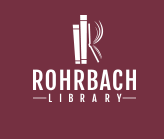Home > Dracula Studies > 7 > No. 1 (2005)
Journal of Dracula Studies
DOI
10.70013/20z5a6b7
Abstract
One of the defining features of Bram Stoker’s Dracula is the “specific and detailed geographical context that sets this novel apart from other gothic novels” (Florescu & McNally 5). Indeed, although Stoker had not visited Transylvania, he is known to have read widely in preparing Dracula.1 While his historical research has come under particular scrutiny, little attention has been paid to his representation and understanding of the region’s geography.2 As a human geographer with research interests in Romania, I find that there is something not “quite right” about Stoker’s Transylvania. In particular, where are the Romanians? And why are there so many Slovaks? And why has a Székler Count built his castle so far from the Szekely land? My focus here is on the people of Bram Stoker’s Transylvania and their geography. Through a consideration of census reports as well as Stoker’s known sources, I examine the nature and distribution of Transylvania’s population in the late nineteenth century and I argue that while Stoker clearly appreciated the multi-ethnic nature of Transylvania, his more detailed understanding of its population geography was patchy at best. Moreover, Stoker was selective in his representation of the various nationalities in Transylvania: some were highlighted for dramatic effect, whereas others were excluded altogether.
Recommended Citation
Light, Duncan
(2005)
"The People of Bram Stoker's Transylvania,"
Journal of Dracula Studies: Vol. 7:
No.
1, Article 5.
DOI: 10.70013/20z5a6b7
Available at:
https://research.library.kutztown.edu/dracula-studies/vol7/iss1/5
Creative Commons License

This work is licensed under a Creative Commons Attribution-NonCommercial-No Derivative Works 4.0 International License.
Included in
English Language and Literature Commons, Feminist, Gender, and Sexuality Studies Commons, Film and Media Studies Commons


